
The Business of Fashion
Agenda-setting intelligence, analysis and advice for the global fashion community.

Agenda-setting intelligence, analysis and advice for the global fashion community.
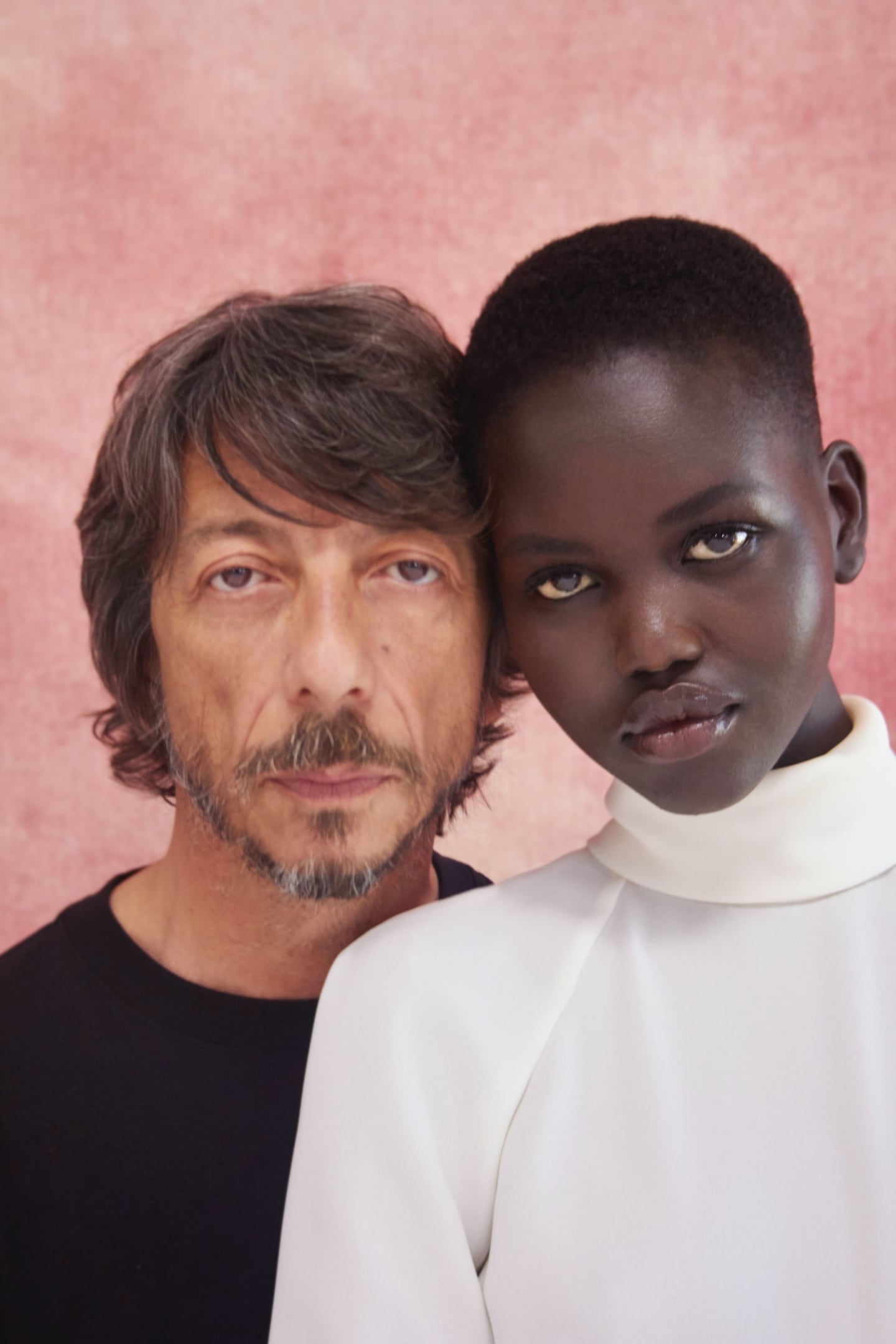
PARIS, France — Don't call her a muse. "It's not a word I use," says Pierpaolo Piccioli, talking about Adut Akech, the South Sudan born 19-year-old model he has chosen as the face of Valentino. "I like the energy of a lot of different people, not just one." So, if not muse, then medium. This young woman, made citizen of the world by a civil war in her homeland that turned her family into refugees, is channelling Piccioli's revamp of Valentino. He has reconciled seeming opposites, extravagance and inclusivity, in a single extraordinary hybrid. The notes for his haute couture presentation in July 2019 referred to "the opulence of diversity." On the catwalk and in advertising campaigns, Adut embodies that powerful, timely notion.
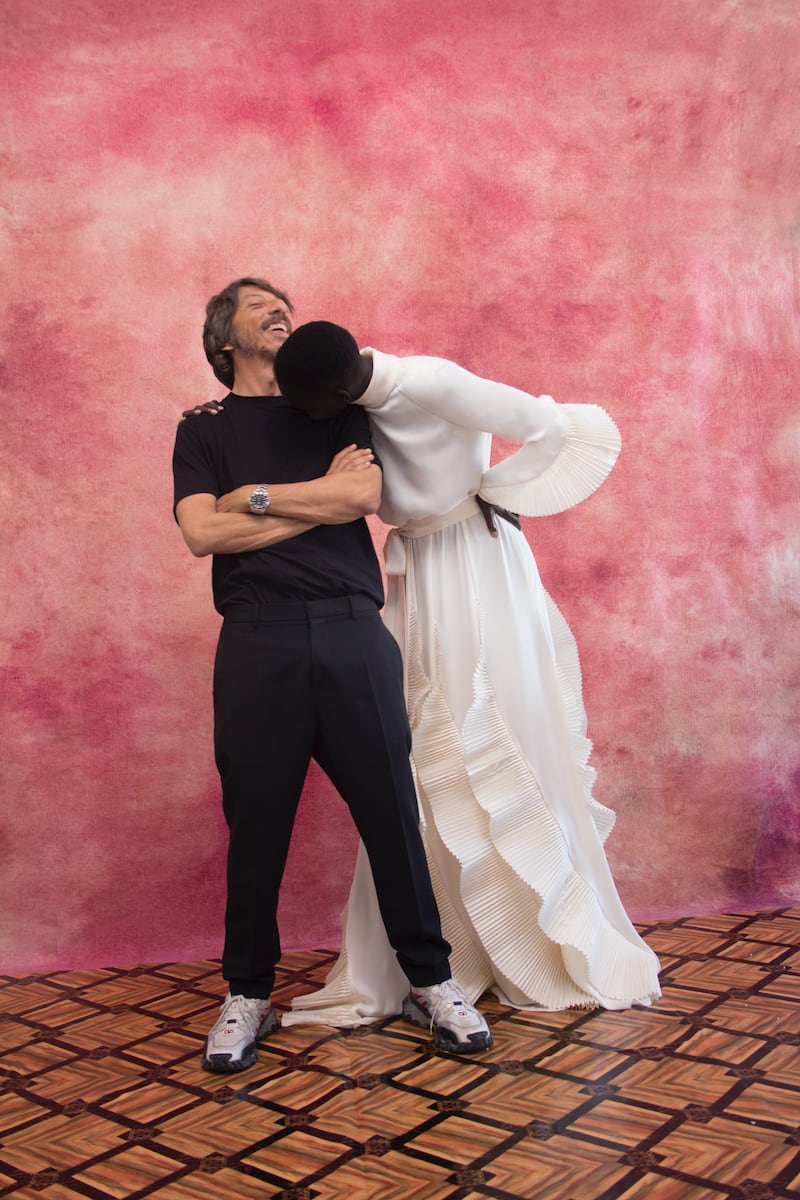
Pierpaolo Piccioli and Adut Akech | Photo: Ruth Ossai
On the day of BoF’s shoot in Valentino’s gilded Paris headquarters on the Place Vendôme, South Sudan has declared another ceasefire in the interminable conflict between the government and opposition forces that was originally responsible for exiling Adut, her mother and five siblings, first to a camp in Kenya, then, when she was six years old, to Adelaide in Australia. “I always had low self-esteem when I was growing up. Being in the Western world, everybody was different to me. Nobody was accepting of me because of where I was from, and when I was getting into this industry, I wondered who’s going to want to work with this little girl from South Sudan.”
Well, try everyone. She recently bought her mother a house in Adelaide, and a car. She is working with the United Nations High Commissioner for Refugees. You can imagine how much her own happy ending means to the people she meets in the course of that work: nothing is impossible. “I try not to think about that when I’m working, to put myself under that kind of pressure,” Adut admits, “but it’s there in the back of my head.” She sees Valentino as her latest safe haven. “It’s one of the only places where I am accepted and befriended and welcomed for who I am. I can come here for a fitting and I could be having the worst day, but I just leave everything behind that door. Pierpaolo puts me in clothes where I can really be myself. I love that.”
ADVERTISEMENT
Their relationship comes across as a genuine friendship more than a professional partnership. “We always talk about bringing her mum here to Paris, to have lunch with the family,” says Piccioli. While Ruth Ossai is taking pictures, he and Adut dance around each other, teasing, laughing, whispering conspiratorially, delighting in each other’s company. She affectionately ruffles his hair, smooths it. He constantly fluffs and fixes her dress.
He acknowledges the incongruity; he the Roman designer in his early fifties, she the Sudanese refugee in her late teens. “At first we were talking about music, about Pink Floyd,” he says. “I’ve heard a lot of music from the past, but I hadn’t heard of Pink Floyd,” she says. “She wanted to be kind with us,” he says, being senior. “Pierpaolo has made me love olden days music,” she says, being kind.
On a purely professional level, Adut brings a lightness to the sculpted majesty of Piccioli’s couture dresses. She gets his clothes. “In fittings I try to communicate my vision, and I can see if the models are aware of what I’m trying to do. When I played Roberta Flack’s The First Time Ever I Saw Your Face during the fittings for the Spring couture, I watched Adut getting emotional. She understood there was something else going on, not just the clothes. That’s her passion. When she tries on things, she cries.”
“I do, I do,” Adut agrees. “When things like that happen, I reflect on how far I’ve come. It’s not sad tears, it’s happy tears, realising my hard work is paying off. I never see anything coming so it’s a big surprise to me.”
I think the glorious past can be contemporary. And it's the girls who bring that, not the clothes.
They met on the Place Vendôme in September 2017, when Adut came for a go-see for the upcoming Spring/Summer 2018 show. Piccioli was downstairs having a cigarette, they struck up a conversation. "We talked for maybe 15, 20 minutes," she remembers. "I was just out of my exclusivity [with Saint Laurent] so this was my first real season, the second show I ever did. I was nervous. We talked about my past, and he was just so cool, so nice. I had no idea he was the designer."
“And then she came upstairs and I was there sitting on the sofa,” Piccioli picks up the story. “It wasn’t an instant thing with me. I was fascinated by her past, but I didn’t know she could become the girl to embody this kind of beauty I like. I felt it but I was not sure. And then, when she walked in that show, she was just so charming, so enthusiastic and genuine. Adut is more aware now, of course, but she always had this enchantment.”
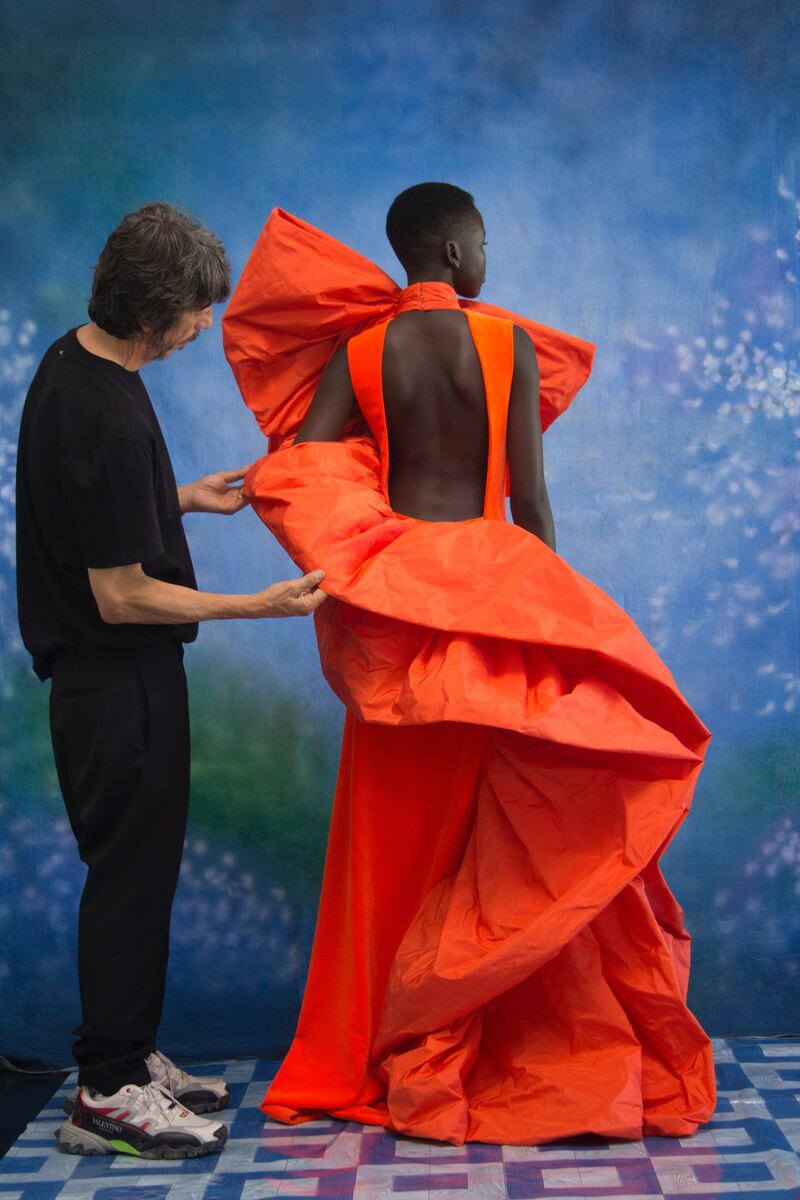
Pierpaolo Piccioli and Adut Akech | Photo: Ruth Ossai
She fortuitously arrived at Valentino just as Piccioli was pondering fashion’s place in a world where political extremism was disfiguring society. On March 4, 2018, the day when Italy joined the global shift to populism by placing Matteo Salvini’s hard-right League party in government, Piccioli was showing his ready-to-wear collection for Autumn/Winter 2018 in Paris. He opened with Adut, closed with French model Assa Baradji; two black girls topping and tailing a show for a marquee Italian brand. That was his response to the racist, anti-immigrant rhetoric which fuelled Salvini’s rise. “To have a Roman brand represented by black beauty goes against all the xenophobia in Italy,” Piccioli said at the time. Still, he resisted a political statement. “An aesthetic message by a designer goes deeper.”
ADVERTISEMENT
And deeper still, with his Spring/Summer 2019 couture show. On his moodboard was Cecil Beaton's famous 1948 photo from American Vogue of women wearing extravagant gowns by the couturier Charles James, a graphic souvenir of a time when high fashion was purely a preserve of white privilege. Those were the days when fashion houses wouldn't loan clothes to Ebony, the first magazine for black women. Its editors had to buy them. Over Beaton's image, Piccioli had tacked a photo of two black women dancing. He also had in mind his friend Franca Sozzani's buzzy July 2008 issue of Vogue Italia, which challenged fashion's lack of inclusivity by casting only black models. In his cast of 65 models, 48 were black. Adut opened again.
It’s often been couture’s peculiar way that teenage girls give flesh to forms of staggering sophistication and luxury. The icon Carmen Dell’Orefice was 15 when she was posing for Horst, Penn and Blumenfeld as far back as the mid-1940s. But Adut stood for something bigger: Piccioli’s own particular commitment to bringing modernity to couture, not through the clothes but through the people who wear them.
“I’m aware of efforts to modernise couture that maybe aren’t so beautiful,” he says. “I like to play on the dream.” He is compelled by the fact that there were decades when black women were denied that dream. It’s the sting in the gorgeousness Piccioli shows us now. “I think the glorious past can be contemporary. And it’s the girls who bring that, not the clothes. In the show, with the black girls one after the other, you see the clothes in a different way, you see colour in a different way. It’s more than just models on a catwalk. It’s an entirely different perspective.”
My job is to bring my inclusive vision of beauty. Streetwear is something different, but when people see black girls in couture, the highest point of fashion, the job is done.
“My job is to bring my inclusive vision of beauty,” Piccioli continues. “I think if a message is aesthetic, it’s stronger. The picture of those black girls wearing those dream gowns didn’t need words. Streetwear is something different, but when people see black girls in couture, the highest point of fashion, the job is done. Images are more powerful than words. Change the face and you change the perception of people more than any slogan.”

Adut Akech | Photo: Ruth Ossai
He concedes that journalists in his own country didn't really get it. (Consider that in the context of the accusations of casual racism that have dogged some of Italy's biggest fashion houses — Gucci, Prada, Dolce & Gabbana — over the past year.) A decade ago, Franca Sozzani's all-black Vogue Italia sold out instantly, everywhere except Italy. "Sometimes, if something doesn't touch you directly, you don't really care," Piccioli sighs. "I don't think all the people were brave enough to say what it was. They were happy to talk about the 10 or 20 ruffles on a dress, but the dress was just part of it." At the same time, Piccioli insists there is as much layered meaning in what he does as there are people in the audience at one of his shows: "All different, all valid," he claimed after his last presentation. That suggests one way, or a multitude of them, that fashion can change people's perceptions. But he also believes that consistency is critical. "McLuhan would say that. The sign and the meaning have to be the same."
You read that right. Pierpaolo Piccioli just invoked Marshall McLuhan, the sage of media theory. Step back and consider how the Canadian philosopher’s most famous statement — “The medium is the message” — relates to the Italian designer’s work at Valentino and that’s when it’s easy to picture Adut Akech not as muse but as medium. Piccioli has always been adamant that he never wanted her as an “exotic” — as that little touch of blackness that proved his woke credentials. “Opening or closing the show, she is The One,” he declares so definitively as to underscore that her magic goes beyond the colour of her skin on the runway, just as it does as the face of Born in Roma, Valentino’s new fragrance.
The name makes sense. The city is the home of Valentino, the man and the business, and it has its own significance for Piccioli. “Rome is a tolerant city: it’s not like Milan, where there are cliques of fashion, theatre, politics, intellectuals. In Rome, everything is mixed, all ages and social levels. Nobody judges you. It gives you a sort of open-mindedness.”
ADVERTISEMENT
Rome has also bequeathed a sense of outsiderhood to Piccioli. “When I was a kid, Rome was not a cool place to come from. It wasn’t considered a fashion city like Milan. And I came from Nettuno, a small seaside town an hour south of Rome, so I was always different. I commuted to the city to study in fashion school. Fashion was never seen as something clever. My friends from Nettuno were studying politics, I was fancy to them. But I wasn’t as fancy as the kids I was studying with. I was too poor for them and too rich for my friends. It’s not good when you’re 20 to feel less than other people, to feel like you don’t belong to any group. You need to grow up to become aware and secure in your point of view, to realise that your difference is your strength. It’s what makes you authentic.”
It's not the first time the house of Valentino has bonded closely with a black model. Valentino Garavani was inspired by Iman. ("But not as closely as this," says Piccioli. "Adut is the first black model to open and close a Valentino show.") Nor is it the first time models of colour have fronted fragrance ads. Naomi Campbell had her own collection of scents, Liya Kebede featured in the campaign for the 2018 update of Calvin Klein's Eternity (originally starring Christy Turlington in 1989). Still, I know what Piccioli means when he says Adut is the first black woman to really star in the launch of a new perfume.
The choice was easy for him. As he told L’Oréal, the brand’s beauty and fragrance partner, she has been opening and/or closing Valentino shows for a while. But the designer also accepts that his choice was a rule-breaker and, therefore, a risk in the formulaic world of fragrance advertising. He hardly needed L’Oréal’s marketing team to point out that white women wouldn’t recognise themselves in the fragrance advertising. Piccoli is convinced that will change. “Fragrance is a dream for all women,” he says. “You don’t think about Adut being black.”
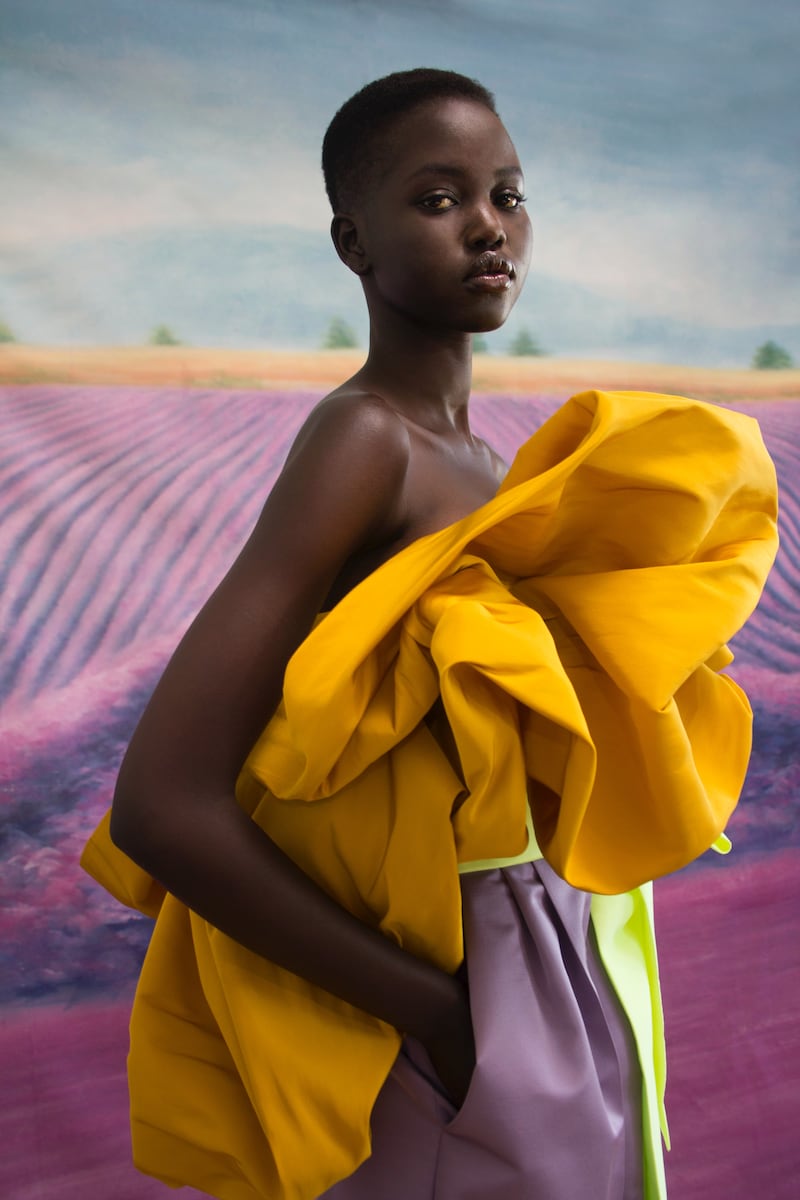
Adut Akech | Photo: Ruth Ossai
"I think it's impossible to look beyond the colour of her skin for where we are in the world today," muses Valerie Steele, director of the Fashion Museum of Technology in New York.
“I think it’s relevant, and that’s a very good thing. Pierpaolo is making a strong statement about black beauty which, in a modern, multicultural world, a luxury brand can and should validate. It is a very positive step that a black woman is being presented as the height of luxury and commerce. But we’re so far from being in a post-racial society that I think colour is always going to signify on many levels.”
Adut herself would agree. “I’m curious to see the response. Before coming to Europe, I did a big job in Australia, one of the biggest you could do. It was the cover of a beauty magazine, and when it came out, a woman went into a store and complained, ‘I don’t see myself in this cover.’ So I have that experience in the back of my mind. It gave me an awareness of people’s ignorance and bigotry.”
“People like that don’t think of themselves as racist,” Piccioli interjects.
“I’ve never seen myself in advertising,” Adut continues, “but at a certain point, I stopped looking for myself. I accepted I wasn’t going to be represented. I couldn’t use the products but I’ve never gone and complained. You just suck it up. Still, I wanted to see myself in someone, and Naomi definitely gave me hope that maybe one day I would see myself.”
Piccioli agrees that Naomi Campbell is a lodestar. “I really wanted to have her in the show last season. Not for the glamour aspect — it embarrassed me to read that — but this was a woman who fought for her rights, and when she walked, all the girls got very emotional. It wasn’t just her celebrity. She did it first, in a way, and she’s still fighting.”
Campbell was always fiercely outspoken about the racism she faced, even as she scaled the heights of her profession. Does a young black woman like Adut still encounter it in the industry? “Absolutely,” she says without hesitation. “It’s not direct, you have to pay attention, but it’s easy for me to pick up on it. Just yesterday, my makeup was done and my foundation was not the right colour and I didn’t see it until I got into the right light. In 2019, that just comes down to people not taking the time to be conscious. You’re a makeup artist coming to do your job, you should be prepared, and if you can’t do it, don’t go up for the job. And it’s not just makeup artists, it happens with a lot of different professions. I don’t like to bash people: I try to be mindful about how I’m going to address the problem. If more people were mindful, we could avoid these situations. But I definitely feel better about the way things are going in the three years I’ve been modelling.” Now, try to imagine how different things might be for Adut in another 30. That’s how long Campbell has been modelling.
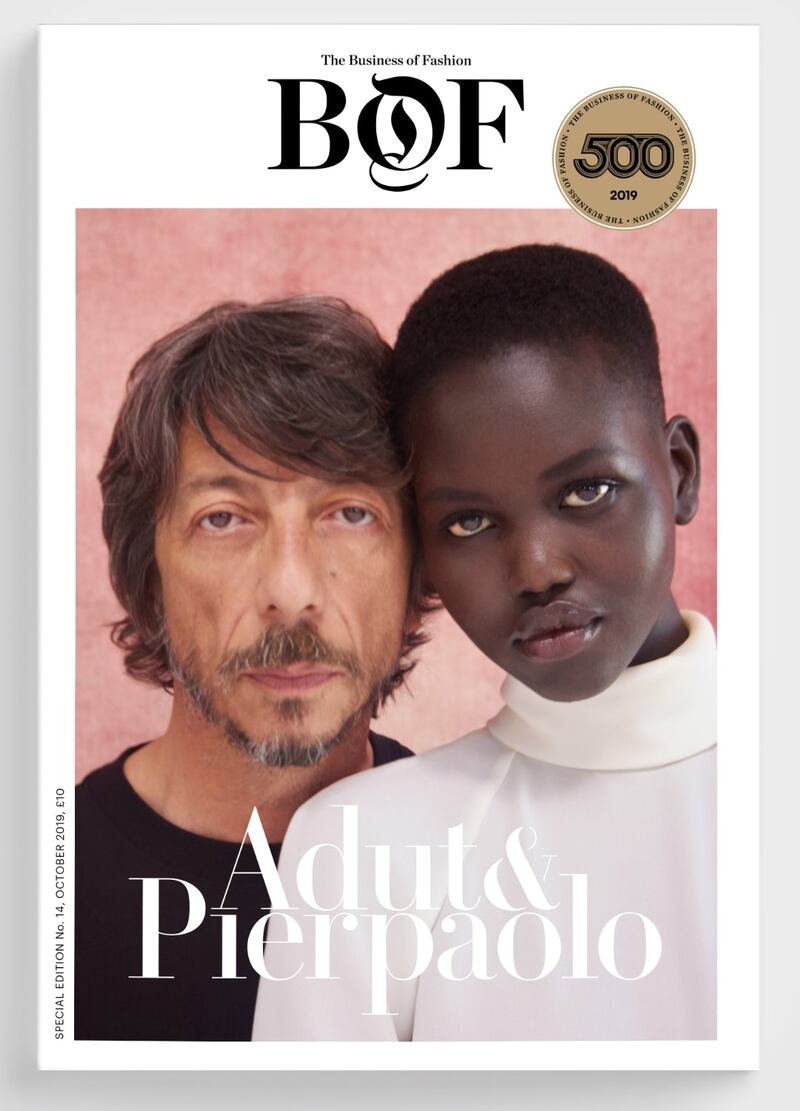
Pierpaolo Piccioli and Adut Akech | Photo by Ruth Ossai for BoF
In this moment, I’m consumed by what Pierpaolo and Adut have in common. In their own way, they are still outsiders. The designer still lives in Nettuno, still takes the train into the city every day. He insists he is the same person he always was, although the world clearly sees him in a different light with his success at Valentino. “Of course, people see Adut in a different way as well, but she is still the same kid. She doesn’t try to be someone else, she doesn’t try to hide her emotions. You can feel them. But she has to be very secure, because she is super young. She’s had to learn from a young age not to take things personally. That’s something I’ve learned from her, the strength to be exactly as you are. It’s not easy in such a competitive environment.”
That strength of self is maybe their fundamental connection. Piccioli insists that his couture collections in January and July carried the same message. Consistency, remember?
“You just keep doing it till people’s attitudes change,” he says. “These are values I believe in. If you stand up for rights, I believe you don’t just stand up for some rights. You stand up for them all.” And he couldn’t wish for a better medium for his message than Adut Akech.
This article appears in BoF’s latest special print edition.
To receive a copy of BoF’s latest special print edition — including the complete index of BoF 500 members — sign up to BoF Professional before December 1, 2019 and enjoy additional benefits including unlimited access to articles, daily members-only insights and analysis and more with your annual membership.
Related Articles:
[ Dapper Dan, Adut Akech, Pierpaolo Piccioli and Chika Are Our #BoF500 Cover StarsOpens in new window ]
[ Valentino’s Plan to Level UpOpens in new window ]
[ Adut Akech: 'I Will Always Be a Refugee'Opens in new window ]
The Hood By Air co-founder’s ready-to-wear capsule for the Paris-based perfume and fashion house will be timed to coincide with the Met Gala in New York.
Revenues fell on a reported basis, confirming sector-wide fears that luxury demand would continue to slow.
IWC’s chief executive says it will keep leaning into its environmental message. But the watchmaker has scrapped a flagship sustainability report, and sustainability was less of a focus overall at this year’s Watches and Wonders Geneva.
The larger-than-life Italian designer, who built a fashion empire based on his own image, died in Florence last Friday.